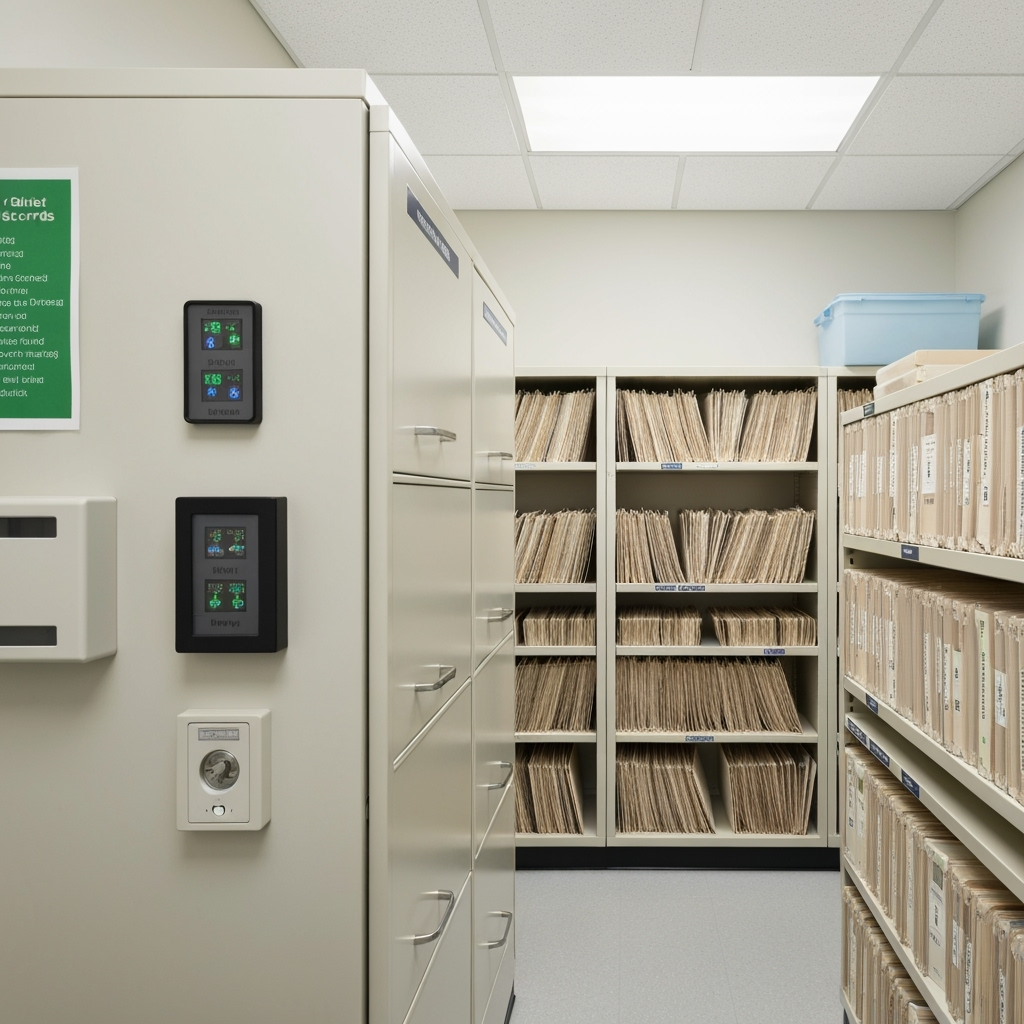
Understanding HIPAA-Compliant Storage Requirements
For healthcare providers, maintaining HIPAA compliance while managing physical medical records is a critical challenge. Public Storage offers specialized solutions that help medical practices meet strict privacy regulations while ensuring efficient access to patient records. This comprehensive guide will help you understand how to properly store medical records while maintaining compliance and organization.
Key Features of HIPAA-Compliant Storage Units
When selecting a storage solution for medical records, certain features are essential for maintaining HIPAA compliance:
- Climate-controlled environments to prevent document deterioration
- Advanced security systems with individual access controls
- 24/7 surveillance monitoring
- Proper ventilation to prevent moisture damage
- Fire-resistant storage options

Best Practices for Medical Records Storage
Follow these guidelines to ensure your medical records storage meets HIPAA requirements:
1. Organization System
Implement a clear filing system that allows for quick record retrieval while maintaining security. Consider:
- Color-coding systems for different departments or years
- Clear labeling without revealing patient information
- Inventory tracking systems
- Regular auditing procedures
2. Access Control
Establish strict protocols for:
- Employee access authorization
- Visitor logging and escort procedures
- Key management and distribution
- Electronic access monitoring
3. Environmental Controls
Maintain appropriate conditions with:
- Temperature monitoring systems
- Humidity control
- Regular HVAC maintenance
- Water damage prevention measures
Choosing the Right Storage Unit Size
Select a storage unit that accommodates both current needs and future growth:
- Small Practice (1-2 providers): 10×10 or 10×15 unit
- Medium Practice (3-5 providers): 10×20 unit
- Large Practice (6+ providers): 10×30 or larger unit
Security Measures for HIPAA Compliance
Implement multiple layers of security:
- Gated facility access with personal entry codes
- Video surveillance coverage
- Individual unit alarms
- Secure locking systems
- Regular security audits
Record Retention and Disposal
Develop clear policies for:
- Record retention timeframes
- Secure document destruction procedures
- Regular review of stored records
- Documentation of disposed records
Emergency Preparedness
Create contingency plans for:
- Natural disasters
- Fire prevention and response
- Water damage mitigation
- Power outages
- Emergency record retrieval
Cost Considerations and ROI
When budgeting for medical records storage, consider:
- Monthly storage unit costs
- Climate control expenses
- Security system investments
- Insurance coverage
- Staff training and management time
Making the Transition to Storage
Follow these steps when moving records to storage:
- Inventory all current records
- Develop a organized packing system
- Create detailed location maps
- Train staff on new procedures
- Implement access protocols
- Conduct regular audits
Conclusion
Proper medical records storage is essential for maintaining HIPAA compliance and protecting patient privacy. Public Storage offers secure, climate-controlled solutions that meet these stringent requirements while providing convenient access for healthcare providers. By following these guidelines and implementing proper security measures, you can ensure your practice maintains compliance while efficiently managing patient records.










Leave a Reply